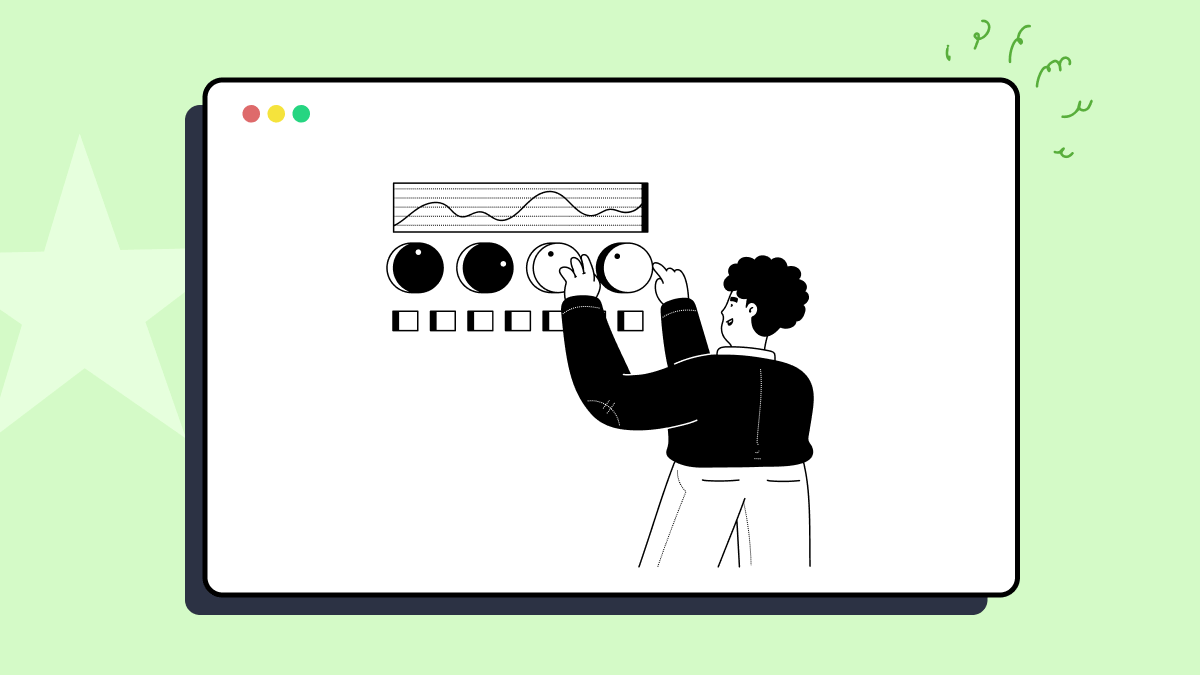How to use sendClientRequestFull method of com.consol.citrus.cucumber.step.runner.http.HttpSteps class
Best Citrus code snippet using com.consol.citrus.cucumber.step.runner.http.HttpSteps.sendClientRequestFull
Source:HttpSteps.java
...125 public void setPayload(String payload) {126 this.body = payload;127 }128 @When("^(?:http-client )?sends? request$")129 public void sendClientRequestFull(String requestData) {130 sendClientRequest(HttpMessage.fromRequestData(requestData));131 }132 @Then("^(?:http-client )?receives? response$")133 public void receiveClientResponseFull(String responseData) {134 receiveClientResponse(HttpMessage.fromResponseData(responseData));135 }136 @When("^(?:http-server )?receives? request$")137 public void receiveServerRequestFull(String requestData) {138 receiveServerRequest(HttpMessage.fromRequestData(requestData));139 }140 @Then("^(?:http-server )?sends? response$")141 public void sendServerResponseFull(String responseData) {142 sendServerResponse(HttpMessage.fromResponseData(responseData));143 }...sendClientRequestFull
Using AI Code Generation
1 @When("^I send (?:a|an|the) (GET|POST|PUT|DELETE|HEAD|OPTIONS|PATCH) request to (.*) with body:$")2 public void sendClientRequestFull(String method, String endpoint, String payload) {3 http().client(client).send().messageType(MessageType.JSON).message(payload).endpoint(endpoint).method(method).contentType("application/json");4 }5 @When("^I send (?:a|an|the) (GET|POST|PUT|DELETE|HEAD|OPTIONS|PATCH) request to (.*) with body:$")6 public void sendClientRequestFull(String method, String endpoint, String payload) {7 http().client(client).send().messageType(MessageType.XML).message(payload).endpoint(endpoint).method(method).contentType("application/xml");8 }sendClientRequestFull
Using AI Code Generation
1 @When("^I send (?:a|an|the) (GET|POST|PUT|DELETE|HEAD|OPTIONS|PATCH) request to (.*) with body:$")2 public void sendClientRequestFull(String method, String endpoint, String payload) {3 http().client(client).send().messageType(MessageType.JSON).message(payload).endpoint(endpoint).method(method).contentType("application/json");4 }5 @When("^I send (?:a|an|the) (GET|POST|PUT|DELETE|HEAD|OPTIONS|PATCH) request to (.*) with body:$")6 public void sendClientRequestFull(String method, String endpoint, String payload) {7 http().client(client).send().messageType(MessageType.XML).message(payload).endpoint(endpoint).method(method).contentType("application/xml");8 }sendClientRequestFull
Using AI Code Generation
1 @Given("^client (.+) sends HTTP (.+) request to (.+) with body:$")2 public void sendClientRequestFull(String clientName, String method, String uri, String body) {3 http().client(clientName).send().messageType(MessageType.PLAINTEXT).payload(body).method(method).uri(uri);4 }5 @Given("^client (.+) sends HTTP (.+) request to (.+)$")6 public void sendClientRequest(String clientName, String method, String uri) {7 http().client(clientName).send().method(method).uri(uri);8 }9 @Then("^client (.+) receives HTTP (.+) request from (.+) with body:$")10 public void receiveClientRequestFull(String clientName, String method, String uri, String body) {11 http().client(clientName).receive().messageType(MessageType.PLAINTEXT).payload(body).method(method).uri(uri);12 }sendClientRequestFull
Using AI Code Generation
1[Given("I send HTTP request to (.*) with body:$"), Scope(Scenario)]2public void sendHttpRequestFull(String url, String body) {3 httpSteps.sendClientRequestFull(url, body);4}5[Given("I send HTTP request to (.*) with body:$"), Scope(Scenario)]6public void sendHttpRequestFull(String url, String body) {7 httpSteps.sendClientRequestFull(url, body);8}9[Given("I send HTTP request to (.*) with body:$"), Scope(Scenario)]10public void sendHttpRequestFull(String url, String body) {11 httpSteps.sendClientRequestFull(url, body);12}13[Given("I send HTTP request to (.*) with body:$"), Scope(Scenario)]14public void sendHttpRequestFull(String url, String body) {15 httpSteps.sendClientRequestFull(url, body);16}17[Given("I send HTTP request to (.*) with body:$"), Scope(Scenario)]18public void sendHttpRequestFull(String url, String body) {19 httpSteps.sendClientRequestFull(url, body);20}21[Given("I send HTTP request to (.*) with body:$"), Scope(Scenario)]22public void sendHttpRequestFull(String url, String body) {23 httpSteps.sendClientRequestFull(url, body);24}25[Given("I send HTTP request to (.*) with body:$"), Scope(Scenario)]26public void sendHttpRequestFull(String url, String body) {27 httpSteps.sendClientRequestFull(url, body);28}29[Given("I send HTTP HTTP reqto (.*) uith body:$"), Scope(Scenario)]30public void sendHttpRequestFull(String url, String body)sendClientRequestFull
Using AI Code Generation
1 public void receiveClientRequest(String clientName, String method, String uri) {2 http().client(clientName).receive().method(method).uri(uri);3 }4 @Then("^client (.+) receives HTTP (.+) request from (.+) with body:$")5 public void receiveClientRequestFull(String clientName, String method, String uri, String body) {6 http().client(clientName).receive().messageType(MessageType.PLAINTEXT).payload(body).method(method).uri(uri);7 }Blogs
Check out the latest blogs from LambdaTest on this topic:
Automation frameworks enable automation testers by simplifying the test development and execution activities. A typical automation framework provides an environment for executing test plans and generating repeatable output. They are specialized tools that assist you in your everyday test automation tasks. Whether it is a test runner, an action recording tool, or a web testing tool, it is there to remove all the hard work from building test scripts and leave you with more time to do quality checks. Test Automation is a proven, cost-effective approach to improving software development. Therefore, choosing the best test automation framework can prove crucial to your test results and QA timeframes.
With the rise of Agile, teams have been trying to minimize the gap between the stakeholders and the development team.
API (Application Programming Interface) is a set of definitions and protocols for building and integrating applications. It’s occasionally referred to as a contract between an information provider and an information user establishing the content required from the consumer and the content needed by the producer.
Smartphones have changed the way humans interact with technology. Be it travel, fitness, lifestyle, video games, or even services, it’s all just a few touches away (quite literally so). We only need to look at the growing throngs of smartphone or tablet users vs. desktop users to grasp this reality.
Automation Testing Tutorials
Learn to execute automation testing from scratch with LambdaTest Learning Hub. Right from setting up the prerequisites to run your first automation test, to following best practices and diving deeper into advanced test scenarios. LambdaTest Learning Hubs compile a list of step-by-step guides to help you be proficient with different test automation frameworks i.e. Selenium, Cypress, TestNG etc.
LambdaTest Learning Hubs:
- JUnit Tutorial
- TestNG Tutorial
- Webdriver Tutorial
- WebDriverIO Tutorial
- Protractor Tutorial
- Selenium 4 Tutorial
- Jenkins Tutorial
- NUnit Tutorial
- Jest Tutorial
- Playwright Tutorial
- Cypress Tutorial
- PyTest Tutorial
YouTube
You could also refer to video tutorials over LambdaTest YouTube channel to get step by step demonstration from industry experts.
Most used method in HttpSteps
- before
- setClient
- setServer
- setUrl
- setRequestPath
- setHost
- setAccept
- setAcceptEncoding
- setContentType
- setContentEncoding
- addCustomHeader
- addHeader
- addPathValidation
- setPayloadMultiline
- setPayload
- sendClientRequestFull
- receiveClientResponseFull
- receiveServerRequestFull
- sendServerResponseFull
- sendClientRequest
- receiveClientResponse
- receiveServerRequest
- sendServerResponse
Try LambdaTest Now !!
Get 100 minutes of automation test minutes FREE!!



